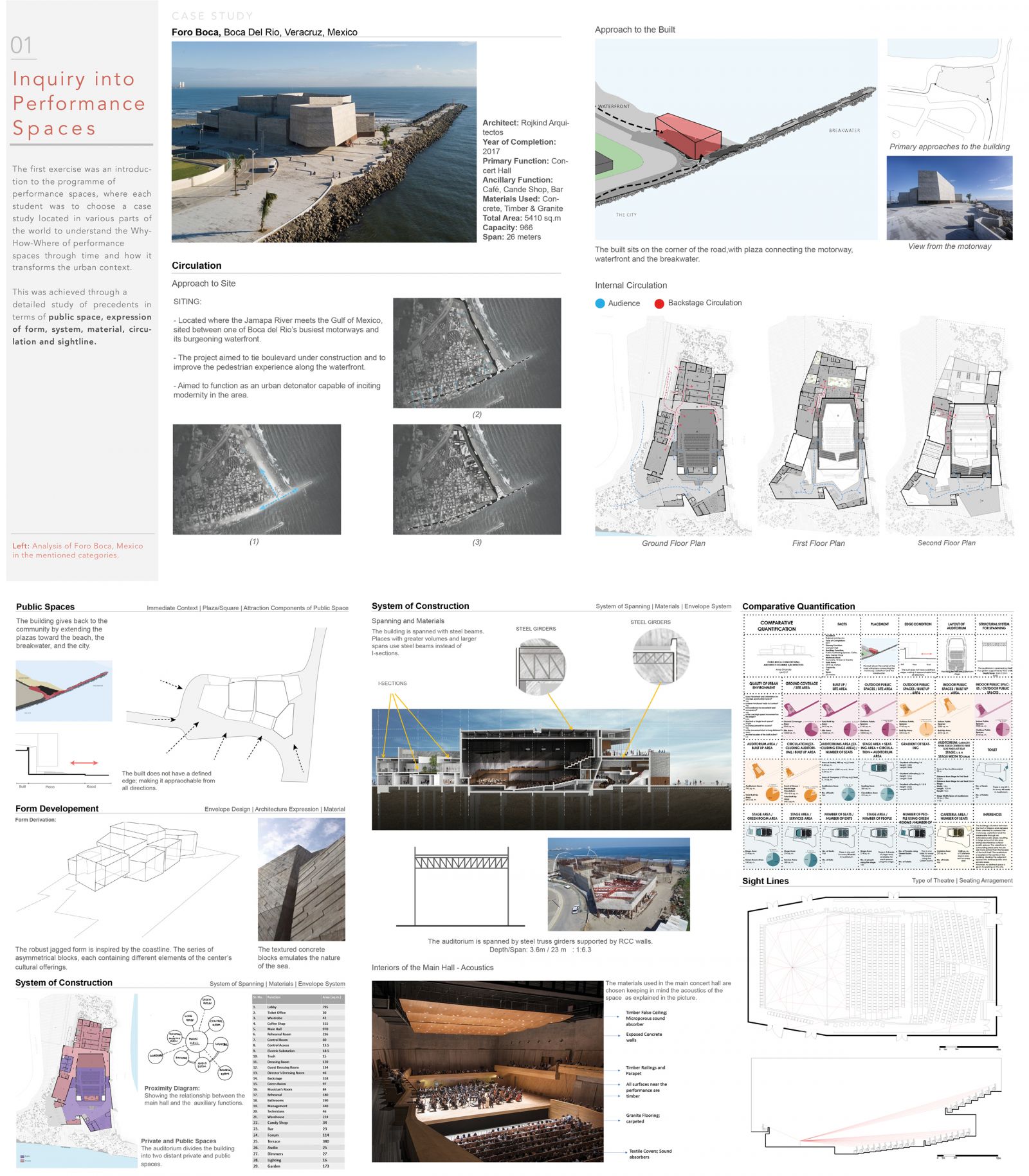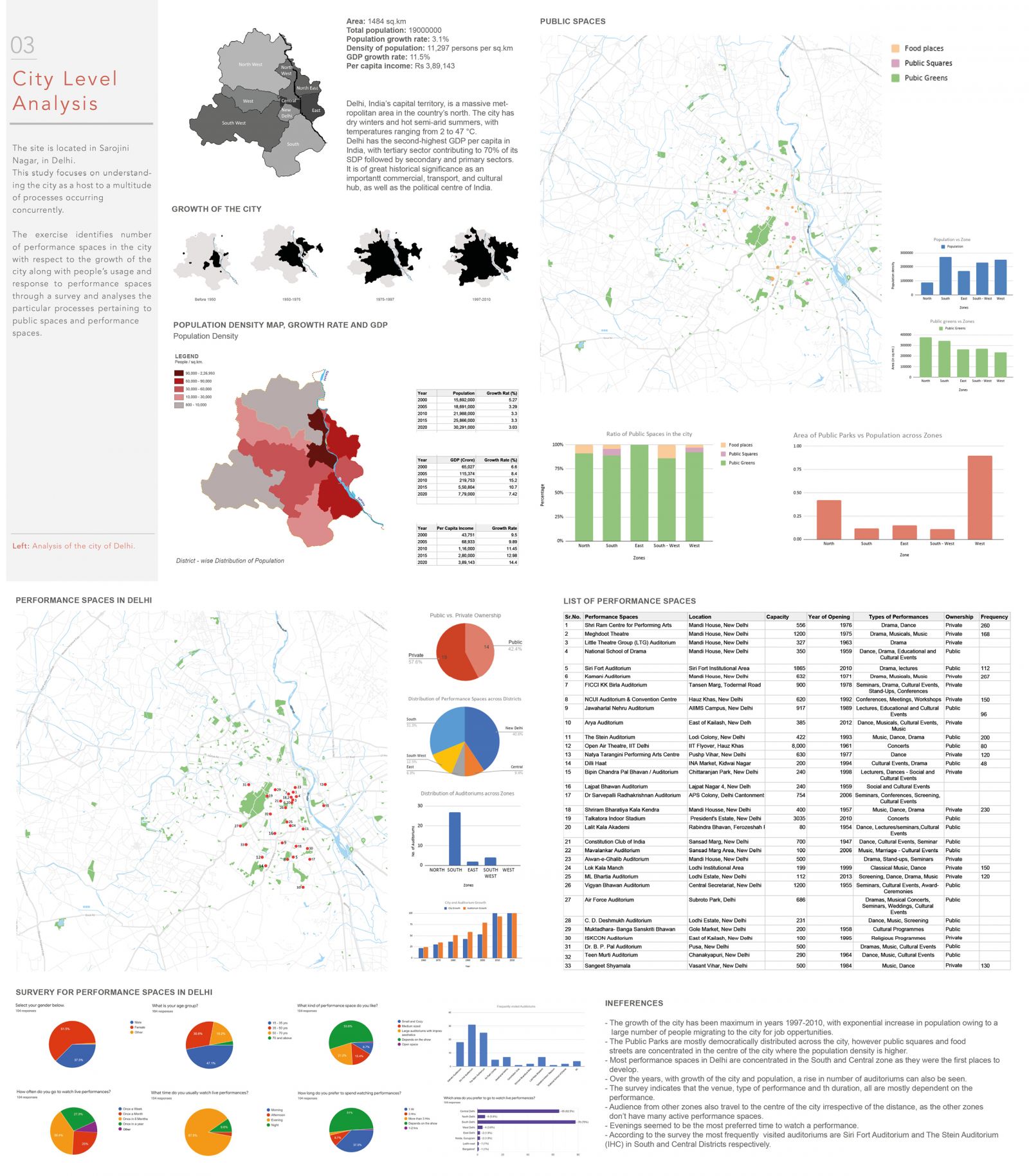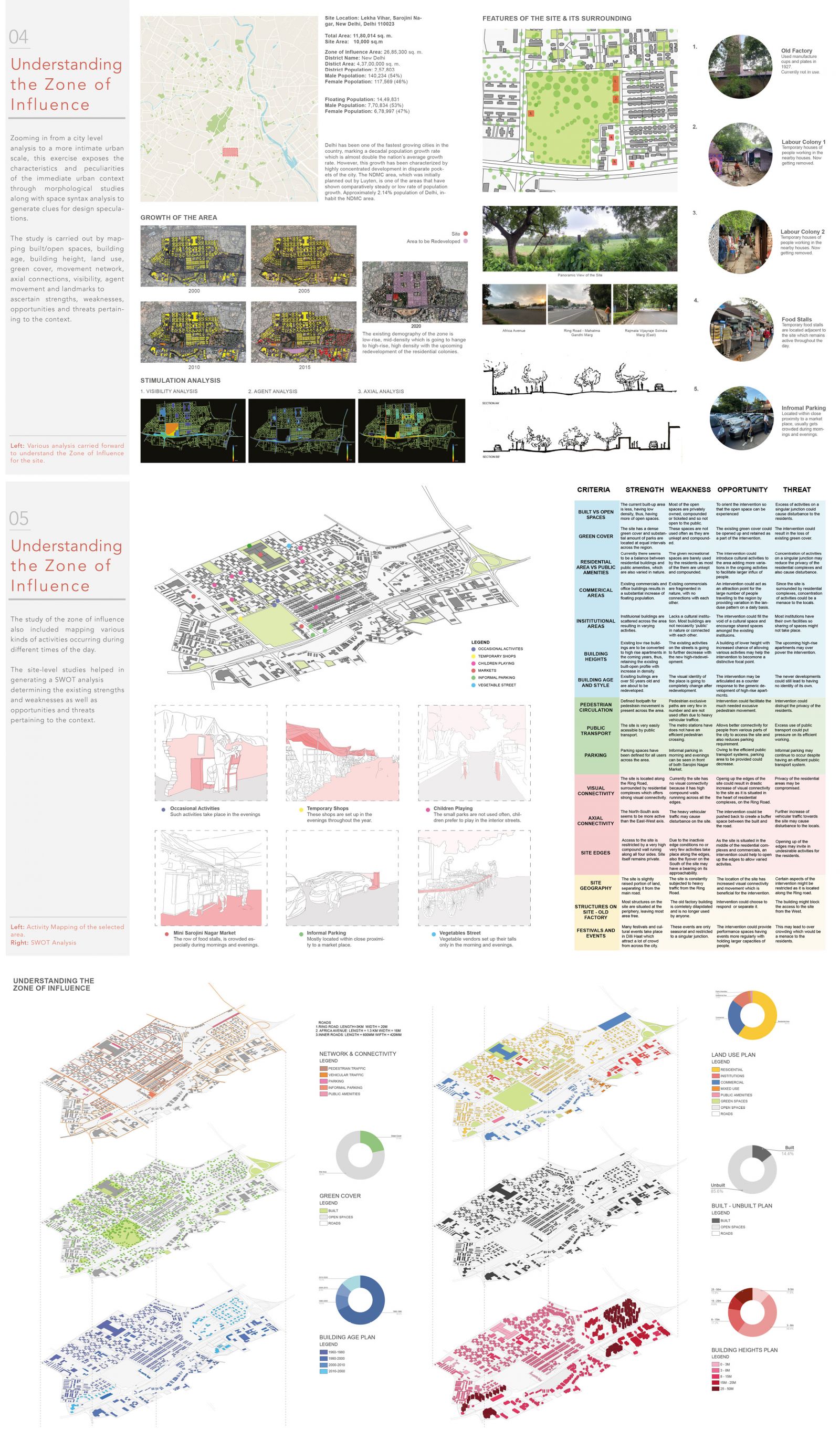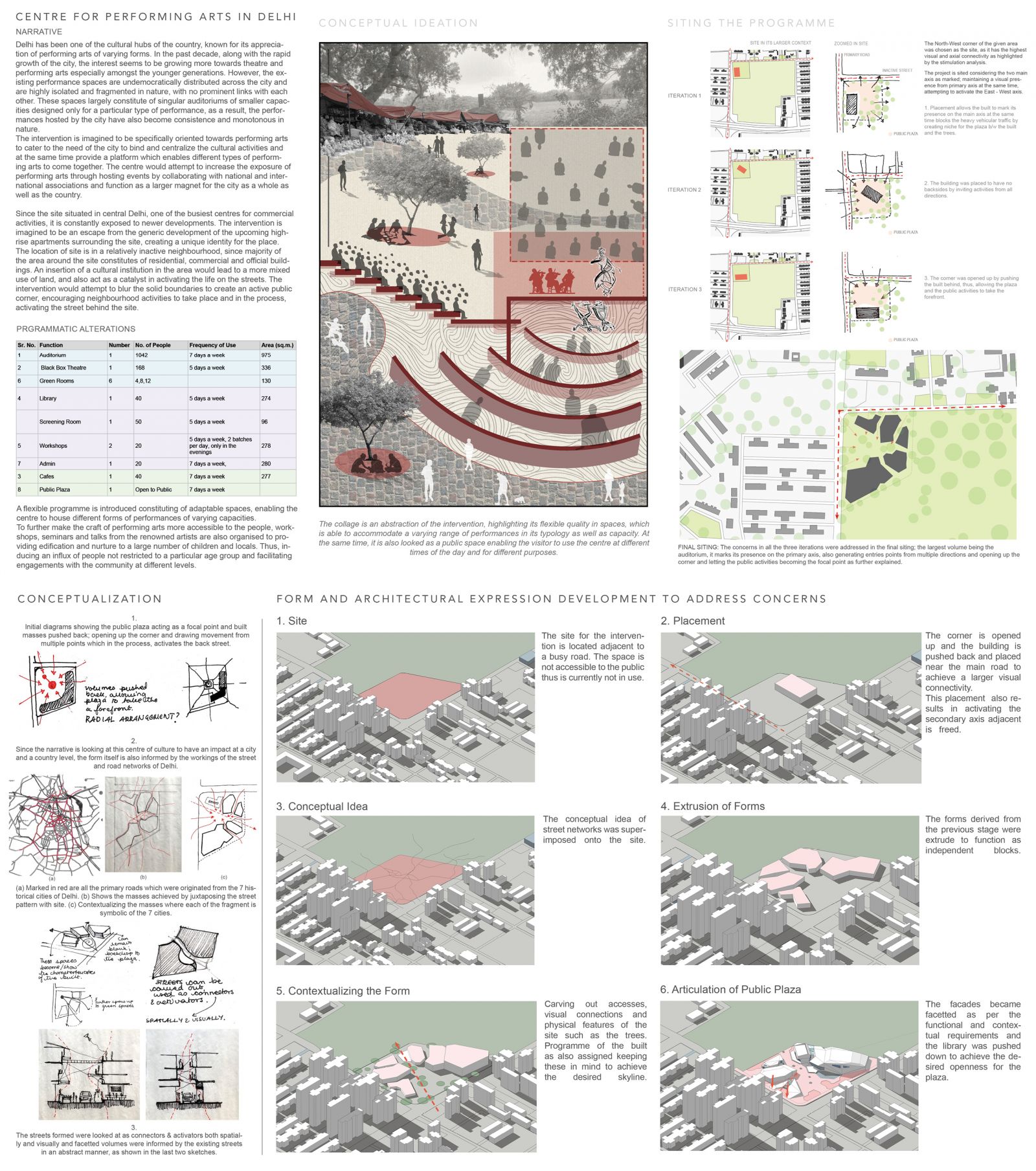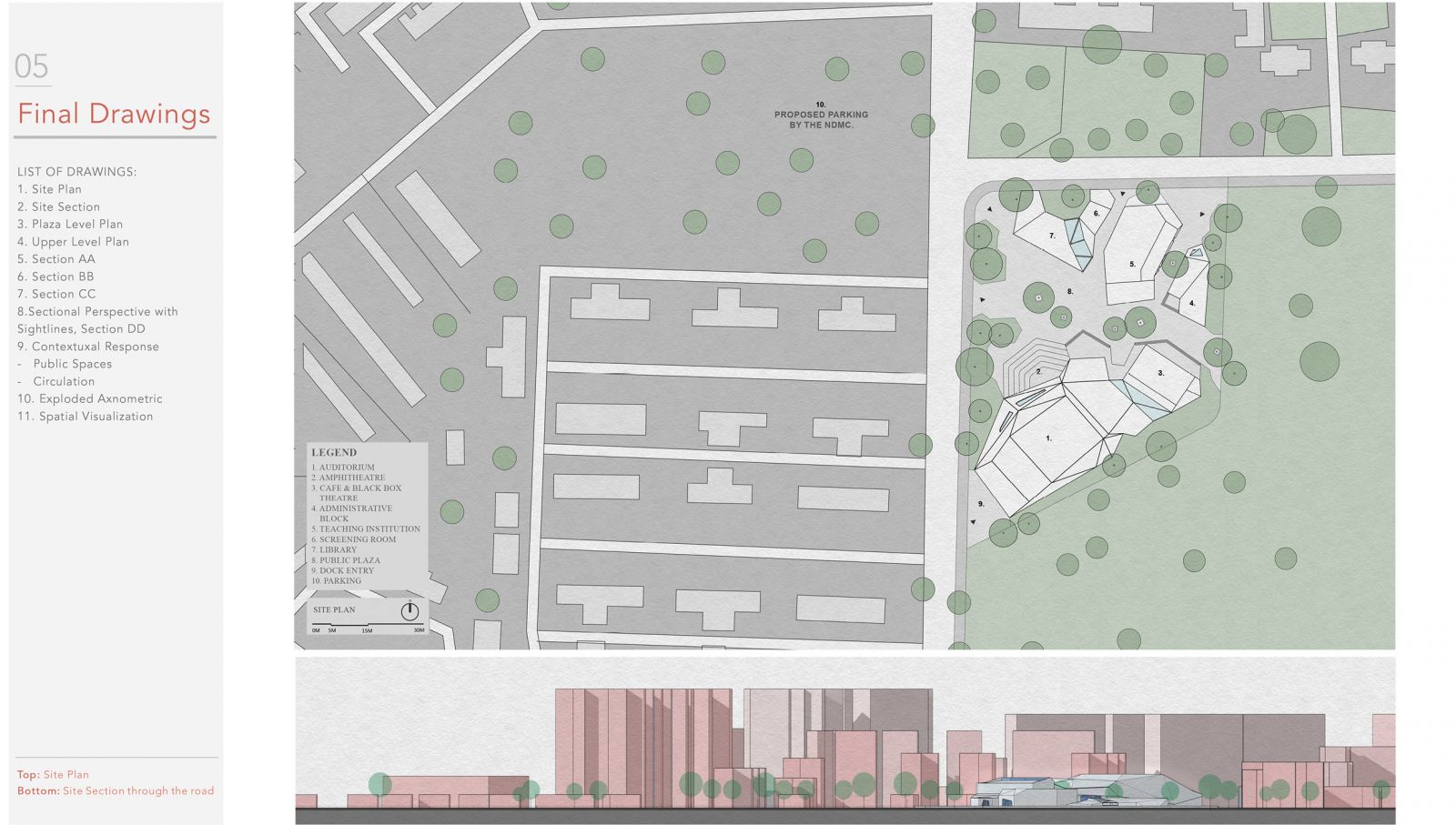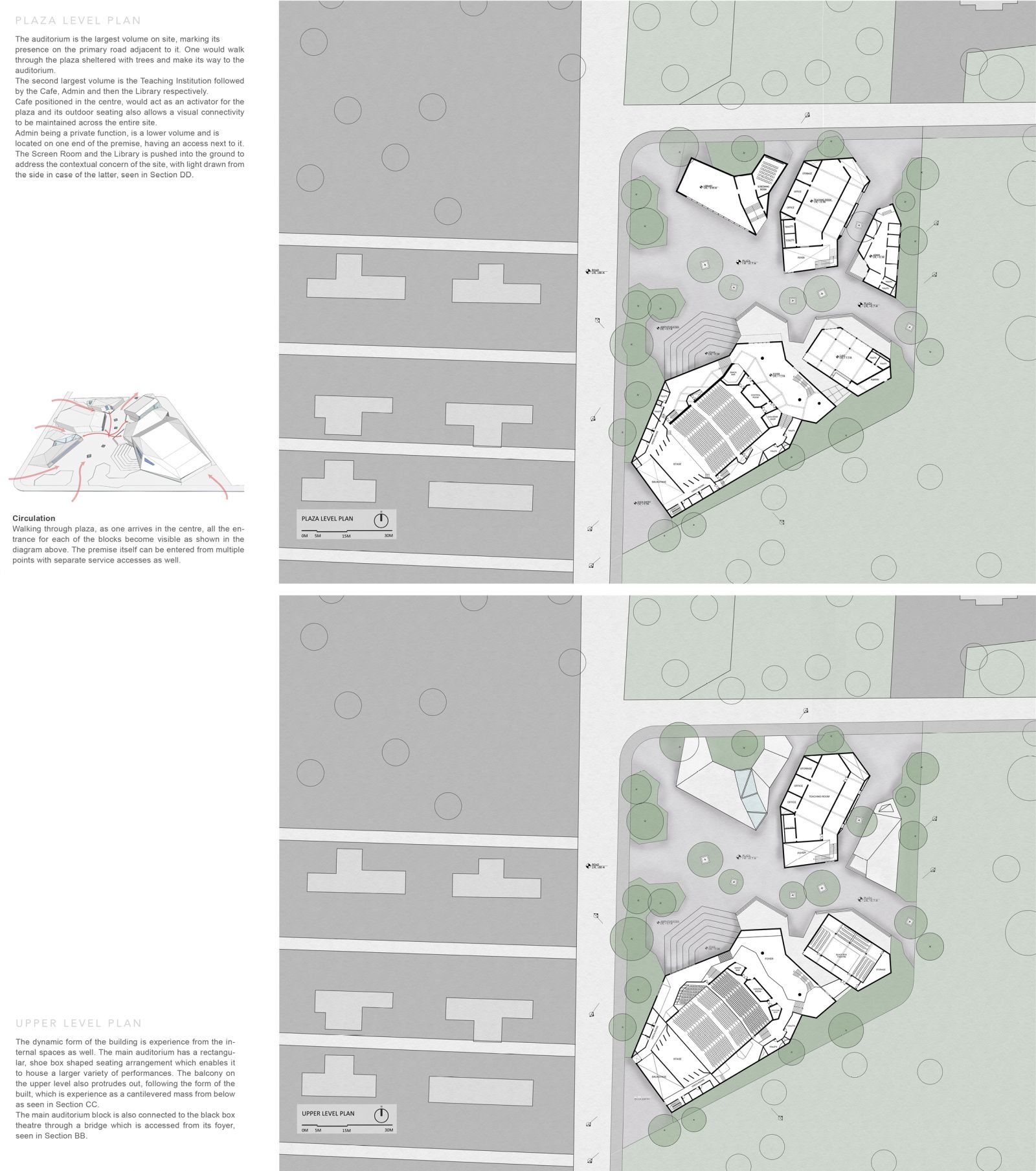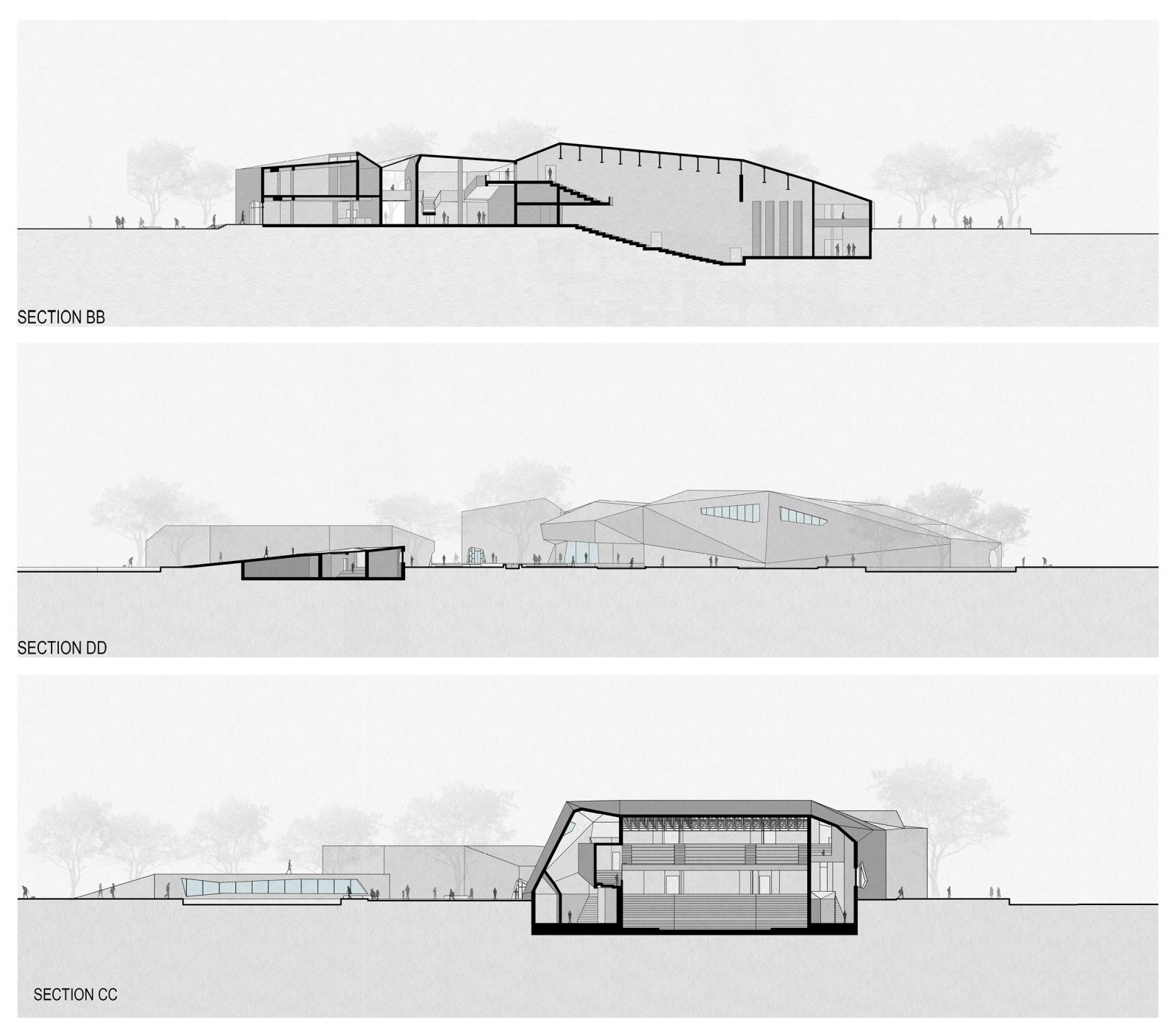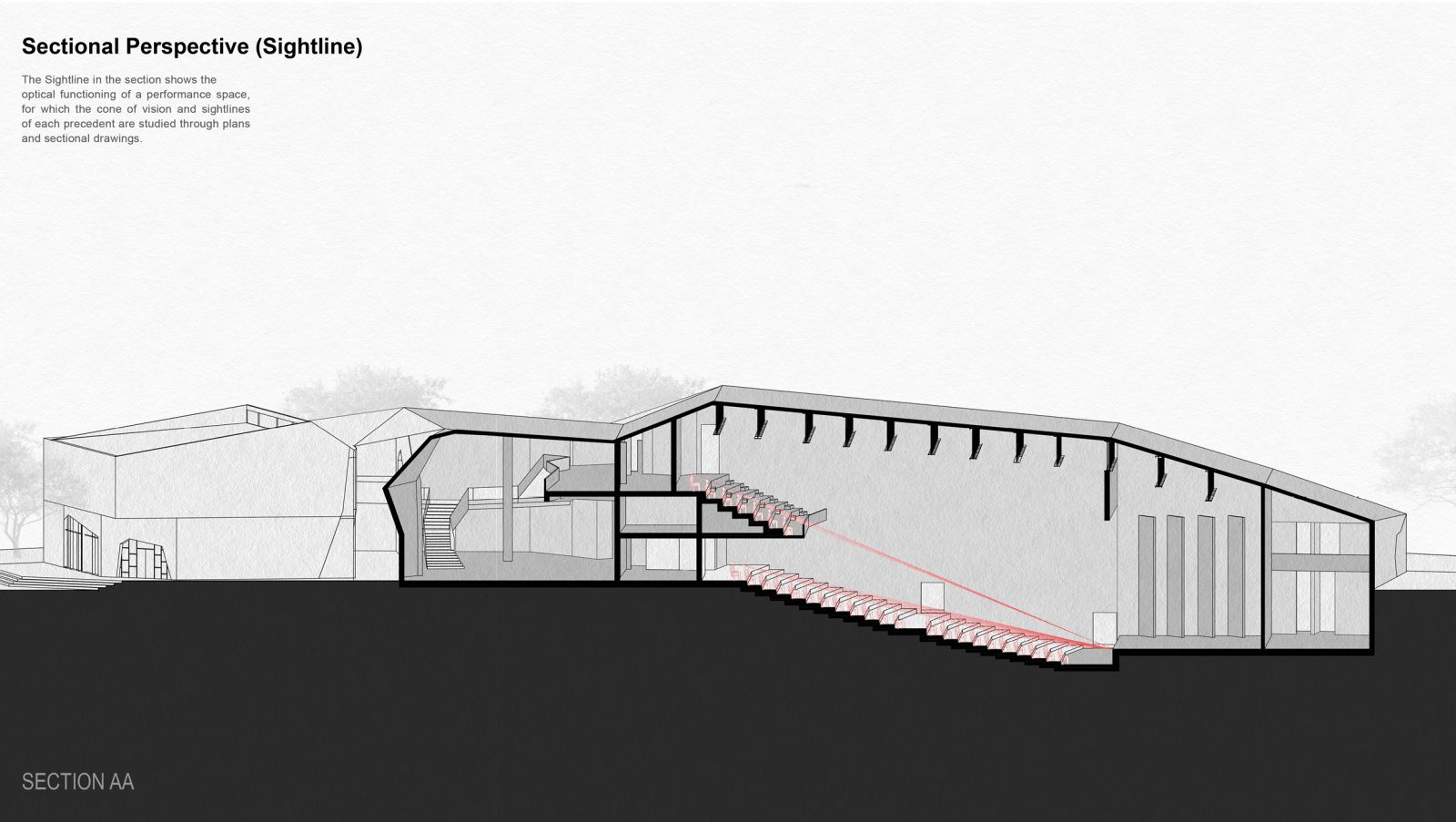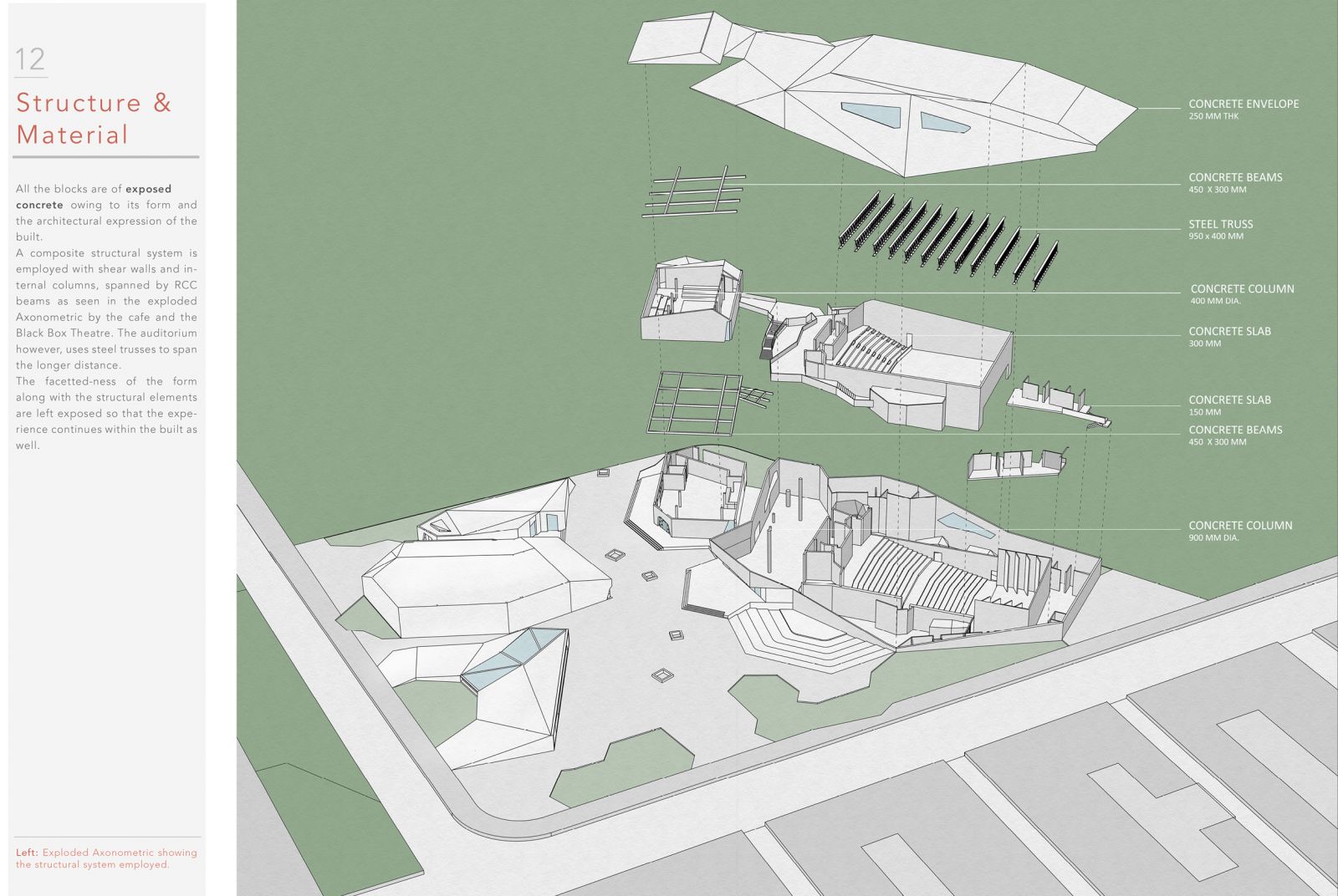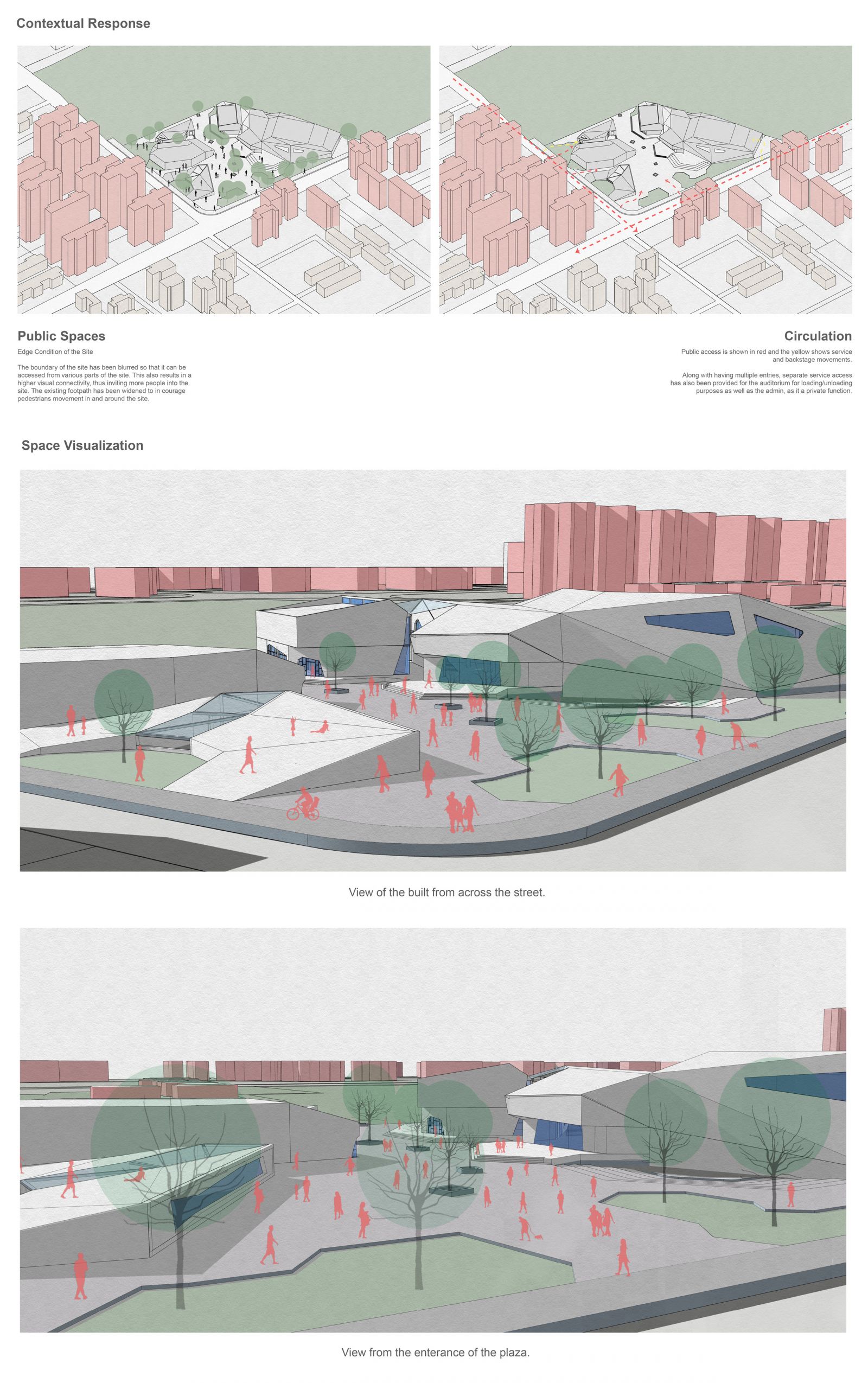Centre for Performing Arts in Delhi
- Student ARYA DHANDA
- Code UA9217
- Faculty Architecture
- Tutor/s Jayant Gunjaria ,Viral Bhavsar
- TA Mohik Acharya
Delhi has been one of the cultural hubs of the country, known for its appreciation of performing arts of varying forms. In the past decade, along with the rapid growth of the city, the interest seems to be growing more towards theatre and performing arts especially amongst the younger generations. However, the existing performance spaces are undemocratically distributed across the city and are highly isolated and fragmented in nature, with no prominent links with each other. These spaces largely constitute of singular auditoriums of smaller capacities designed only for a particular type of performance, as a result, the performances hosted by the city have also become consistence and monotonous in nature.
The intervention is imagined to be specifically oriented towards performing arts to cater to the need of the city to bind and centralize the cultural activities and at the same time provide a platform which enables different types of performing arts to come together. The centre would attempt to increase the exposure of performing arts through hosting events by collaborating with national and international associations and function as a larger magnet for the city as a whole as well as the country.
Since the site situated in central Delhi, one of the busiest centres for commercial activities, it is constantly exposed to newer developments. The intervention is imagined to be an escape from the generic development of the upcoming high-rise apartments surrounding the site, creating a unique identity for the place.
The location of site is in a relatively inactive neighbourhood, since majority of the area around the site constitutes of residential, commercial and official buildings. An insertion of a cultural institution in the area would lead to a more mixed use of land, and also act as a catalyst in activating the life on the streets. The intervention would attempt to blur the solid boundaries to create an active public corner, encouraging neighbourhood activities to take place and in the process, activating the street behind the site.
